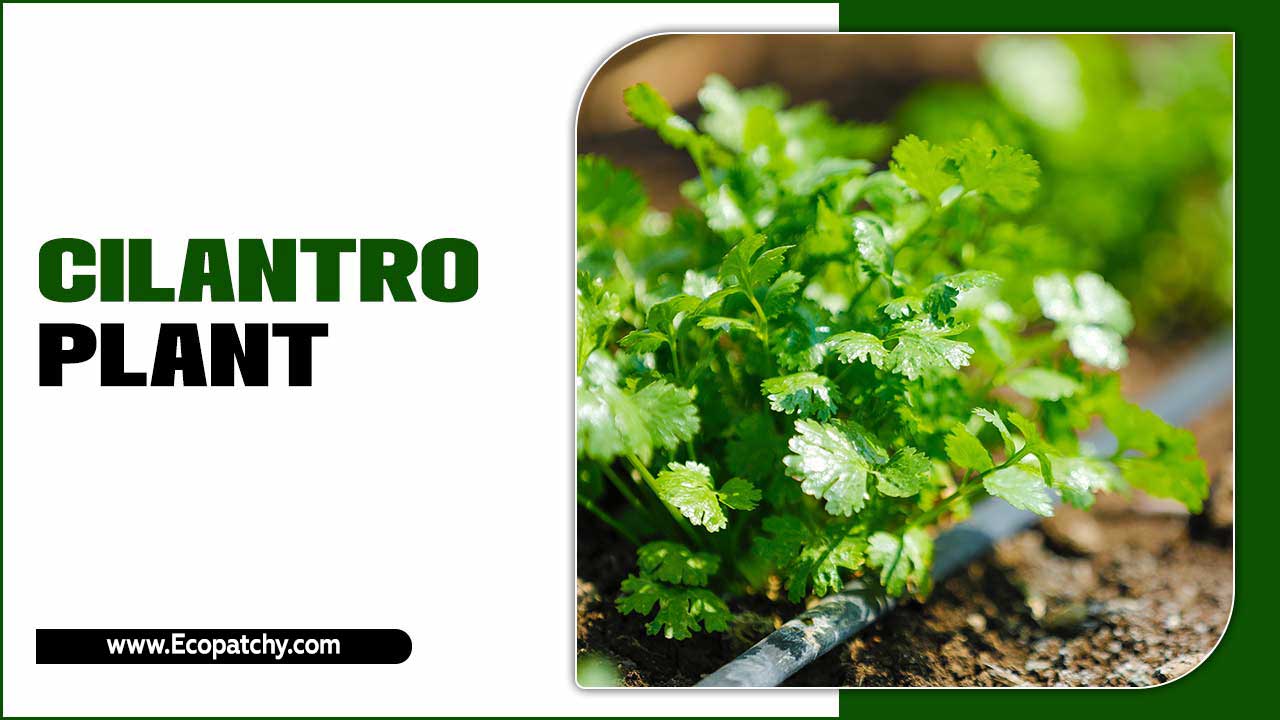Cilantro, also known as coriander, is a versatile herb that is highly prized for its distinctive flavor and aroma. It is a key ingredient in many cuisines around the world, from Mexican and Indian to Southeast Asian dishes.
However, there is often confusion about the various types of cilantro and their uses. Here we will take you through the basics of cilantro plants and their different types. We will also help clear any confusion between cilantro and coriander, often used interchangeably.
We will talk about leaf cilantro, how to grow and identify it, and how to use it. Additionally, we have listed down all the types of cilantro you can try growing in your garden- Delfino Cilantro, Moroccan Coriander, Vietnamese Cilantro, and Culantro. We will also discuss all Types of cilantro.
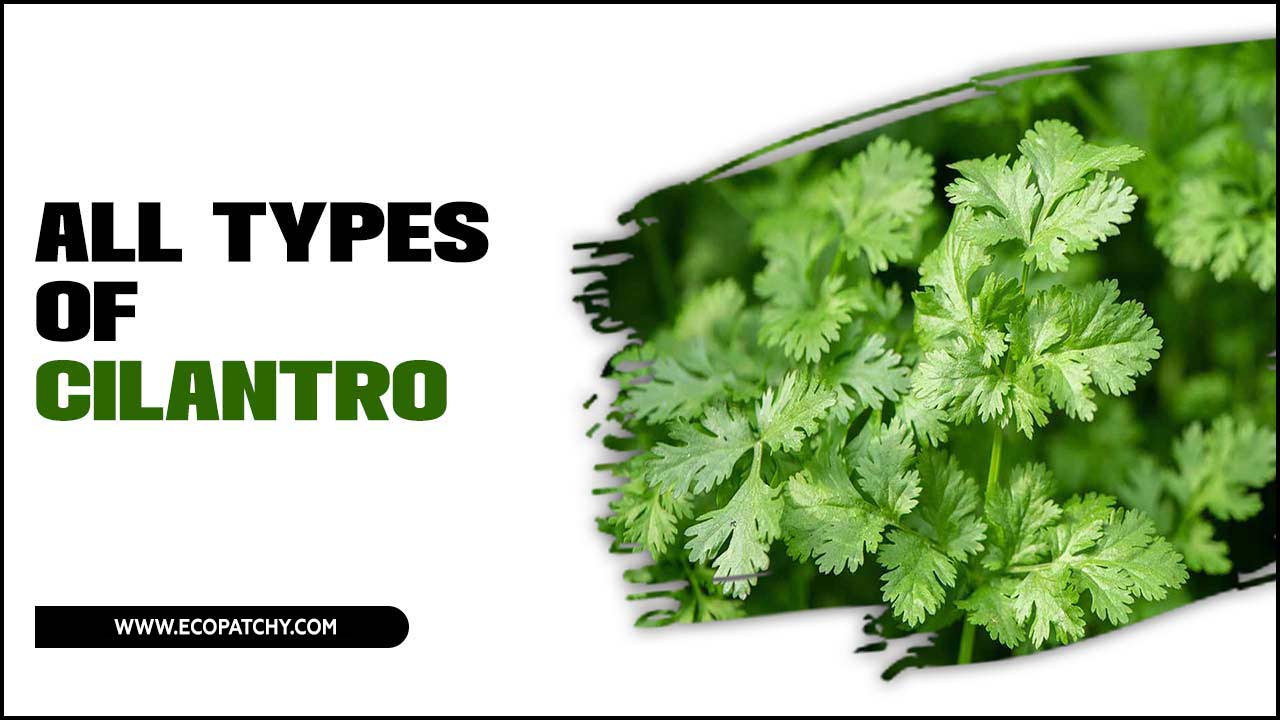
Cilantro Plant Basics

Cilantro is a versatile herb widely used in various cuisines. Belonging to the Apiaceae family, it is known for its unique flavor. The cilantro plant features dark green leaves and can grow up to 20 inches tall. Thriving in warmer climates, it prefers well-drained soil for optimal growth.
Additionally, cilantro leaves are packed with an array of vitamins and minerals, making them a healthy addition to various dishes. With its wide variety of cilantro types, including dill, calypso, confetti, caribe, and more, gardening enthusiasts can enjoy a long-standing supply of fresh herbs that add freshness and complexity to their culinary creations.
Name Confusion

Cilantro, commonly known as Chinese parsley or coriander leaves in certain regions, is often mistaken for coriander, which pertains to the seeds of the cilantro plant. It’s essential to understand that different types of cilantro can vary in taste and appearance.
Additionally, sometimes people use the term “culantro” to refer to a separate herb with similar flavors. This name confusion can lead to misunderstandings regarding culinary uses and gardening practices. Fresh herbs like cilantro can add depth and flavor to various dishes, making it a valuable ingredient in cuisines worldwide.
Leaf Cilantro
Leaf cilantro, the most common type of cilantro used in cooking, boasts bright green leaves with a distinct pungent flavor that adds a fresh and citrusy taste to various dishes. People often use this versatile herb as a garnish in salads, soups, and curries, bringing a vibrant touch to the plate.
Whether grown in herb gardens or pots, leaf cilantro is easy to cultivate, making it a popular choice for home cooks and gardening enthusiasts. With its unmistakable aroma and culinary versatility, leaf cilantro is a must-have herb for those looking to elevate their dishes with a burst of flavor.
How To Identify Leaf Cilantro
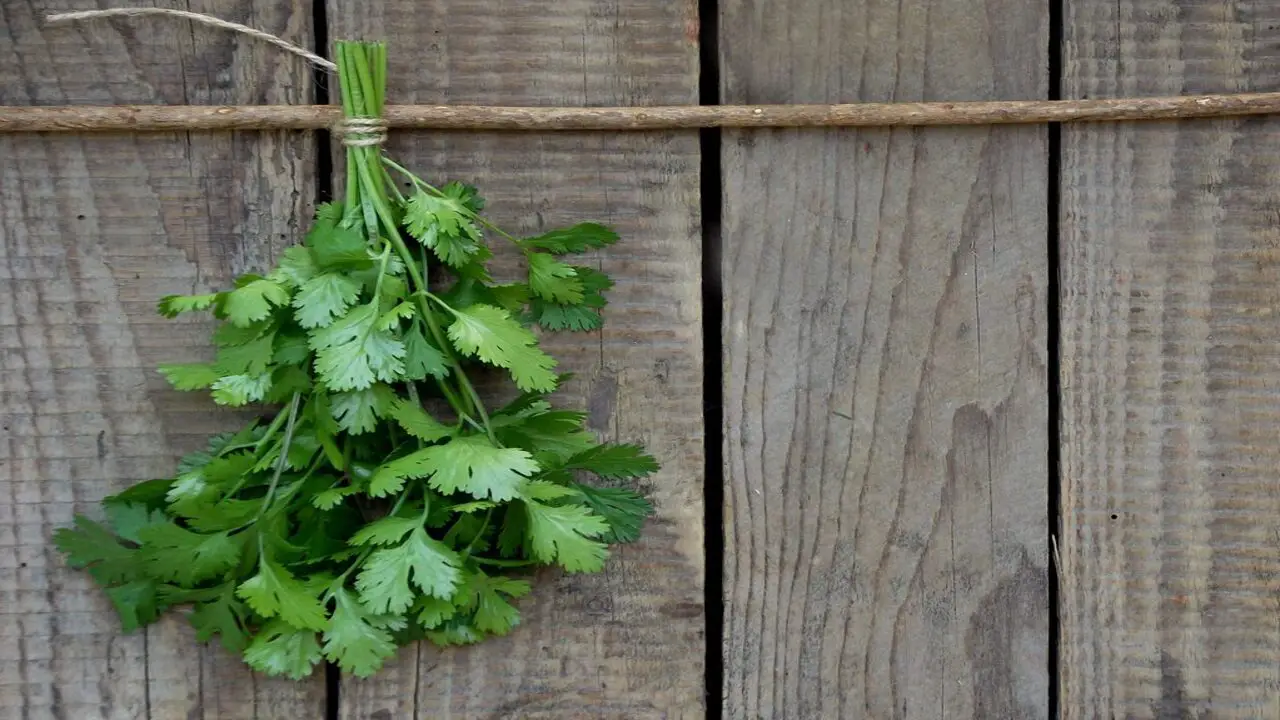
Identifying leaf cilantro is fairly straightforward. Leaf cilantro, also known as coriander or Chinese parsley, has distinct characteristics that set it apart from other herbs. Look for leaves that are bright green in color and have a feathery, delicate appearance.
The leaves will have multiple segments or lobes, making them lacy or fern-like. The aroma of leaf cilantro is also a strong indicator – it has a pungent, citrusy scent often described as fresh and vibrant. When in doubt, gently rub the leaves between your fingers to release the fragrance and confirm that you have leaf cilantro.
How To Grow Leaf Cilantro
You can easily grow leaf cilantro, a popular herb used in various dishes, from seeds or seedlings. For optimal growth, it requires well-drained soil and partial sunlight. You can sow the seeds directly in the garden or pots, ensuring that the soil remains moist without overwatering.
Leaf cilantro is fast-growing, allowing you to harvest fresh leaves within a few weeks. With its bright green color and distinct pungent flavor, leaf cilantro adds a refreshing touch to salads, soups, and curries. Start your gardening journey and enjoy growing your fresh herbs.
Ways To Use Leaf Cilantro
Leaf cilantro, also known as coriander, is a versatile herb that can be handy in a variety of dishes to add a fresh and vibrant flavor. Remember to wash and dry the leaf cilantro thoroughly before using it to remove any dirt or grit. With its distinct flavor profile, leaf cilantro will elevate any dish and bring a touch of freshness to your culinary creations. Here are some ways to use leaf cilantro in your cooking:
- Salsa: Add chopped leaf cilantro to your favorite recipe for extra flavor and freshness.
- Salad Dressing: Blend leaf cilantro with olive oil, lime juice, garlic, and salt to create a zesty salad dressing that pairs well with greens or grilled vegetables.
- Marinade: Mix minced leaf cilantro with soy sauce, ginger, garlic, and honey to create a flavorful marinade for chicken, fish, or tofu.
- Thai curry: Add chopped leaf cilantro to your homemade Thai curry paste for an added layer of herbaceousness.
- Guacamole: Incorporate finely chopped leaf cilantro into your recipe for a bright and herbaceous twist on this classic dip.
- Garnish: Sprinkle whole or chopped leaf cilantro over soups, stews, tacos, or rice dishes as a colorful and aromatic garnish.
All Types Of Cilantro To Try Growing
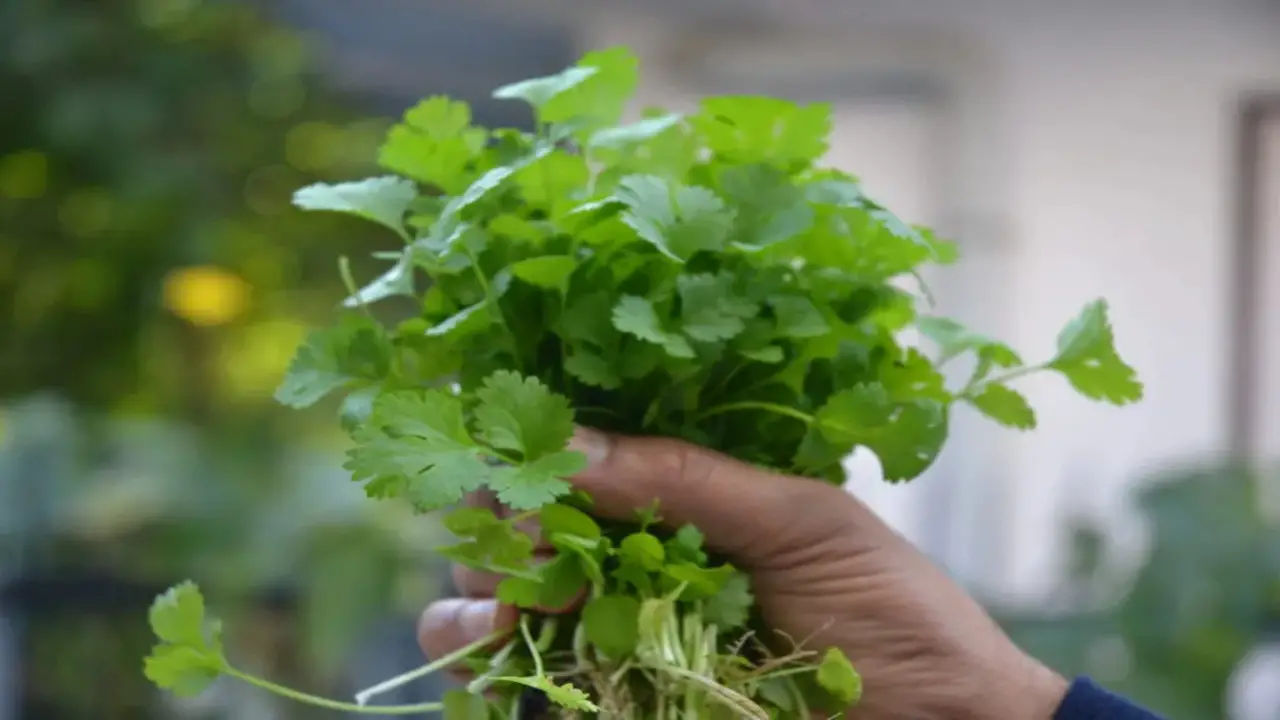
Expand your herb garden by exploring different varieties of cilantro. Each type of cilantro offers unique flavors and characteristics, allowing you to expand your culinary repertoire.
Experiment with varieties like Delfino cilantro, known for its delicate fern-like leaves, or Moroccan coriander, with its rich and spicy flavor. Vietnamese cilantro adds a fresh and vibrant taste to various dishes, while culantro, a close relative of cilantro, has a stronger and more pungent flavor.
With so many options available, you can enjoy cilantro’s versatility in various cuisines. Try growing different types to find your favorites and enhance the flavor of your dishes with these fresh herbs. Scroll down to get details on all Types of cilantro.
Delfino Cilantro
Delfino cilantro, known for its fern-like foliage, offers a unique twist to traditional cilantro. Its delicate and lacy leaves add a touch of visual appeal to culinary creations. The flavor of Delfino cilantro is milder than regular cilantro, with hints of citrus and anise.
It is often handy as a garnish or in Asian dishes, bringing freshness to various culinary delights. Whether you’re garnishing a dish or experimenting with different flavors, Delfino cilantro is a versatile herb that can elevate the taste and presentation of your meals.
Moroccan Coriander
Moroccan coriander, also known as Cilantro sativum, is a type of cilantro with larger leaves. Unlike regular cilantro, it boasts a stronger flavor and aroma. This cilantro variety is commonly used in North African cuisine, adding depth to dishes like tagines and couscous.
Moroccan coriander has a unique flavor profile with hints of citrus and spice, making it a popular choice for adding an exotic touch to various dishes. Whether you’re an adventurous home cook or a professional chef, exploring the world of cilantro varieties like Moroccan coriander can elevate your culinary creations.
Vietnamese Cilantro
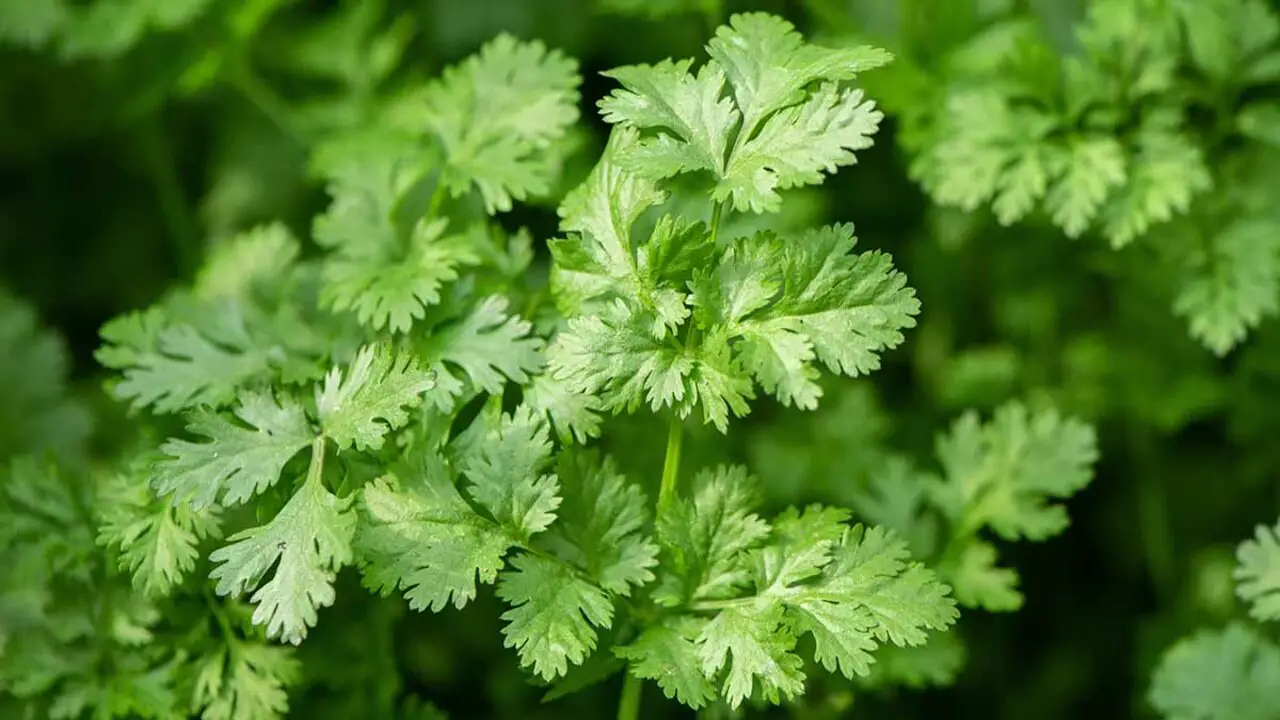
Vietnamese cilantro, or rau ram, is a popular herb in Southeast Asian cooking. Its long, narrow leaves and peppery flavor add a unique and refreshing taste to various dishes. Vietnamese cilantro is commonly handy in fresh spring rolls and noodle dishes and enhances the flavors of salads and stir-fries.
Thriving in hot weather and preferring partial shade, this cilantro variety is a great addition to your gardening endeavors. Its presence alongside fresh herbs like mint and thyme can create a vibrant and flavorful dining experience. With its distinct characteristics, Vietnamese cilantro is a valuable substitute for the more familiar leaf cilantro.
Culantro
Culantro, a herb often mistaken for cilantro, offers a unique flavor profile. Its long, serrated leaves resemble parsley, and it is commonly handy in Caribbean and Latin American cuisines. Unlike cilantro, culantro has a stronger and more pungent taste, making it a popular choice for adding depth to stews, soups, and marinades.
With its distinct flavor, this herb can elevate the taste of various dishes. Whether you’re a gardening enthusiast or a leisure cilantro connoisseur, culantro is worth a try. Its spiny leaves and long-standing presence in culinary traditions make it a caribe cilantro to spice up your recipes.
What Type Of Cilantro Is Best?
When it comes to cilantro, there are a few different types to choose from, each with its unique flavor profile. The two most common types are Chinese cilantro and Mexican cilantro. Chinese cilantro has a milder, more delicate flavor, while Mexican cilantro is known for its strong, pungent taste.
Ultimately, the best type of cilantro will depend on personal preference and the specific dish you are preparing. Experimenting with different varieties can help you find the one that suits your taste buds best.
Is Cilantro Same As Coriander?
Cilantro and coriander are the same plant, but they refer to different parts of the plant. Cilantro typically refers to the leaves and stems of the plant, which are commonly used as an herb in cooking. The leaves have a bright, citrusy flavor and are often used in Mexican, Indian, and Southeast Asian cuisines.
On the other hand, coriander refers to the seeds of the plant, which have a warm, nutty flavor. These seeds are commonly used as a spice in various dishes and can be ground or crushed to release their flavor. So, while cilantro and coriander come from the same plant, they offer different flavors and uses in culinary applications.
What Are Some Tips For Maintaining Healthy Plants?
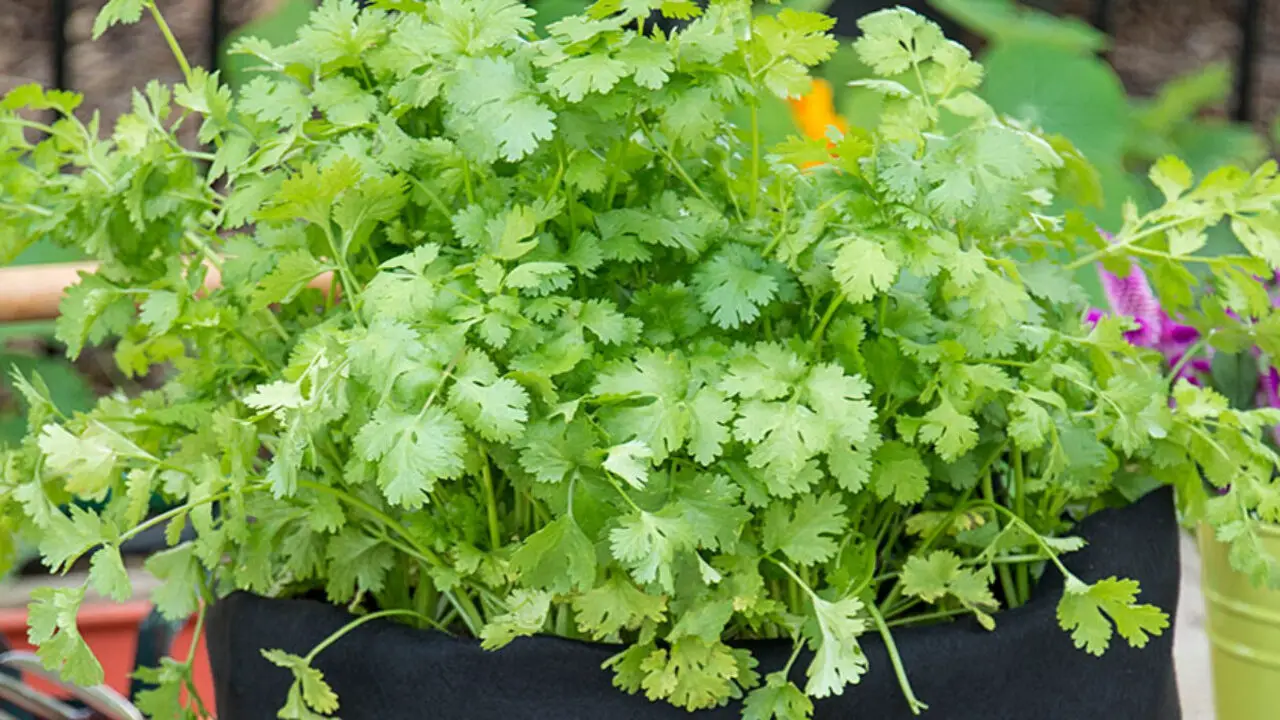
Maintaining healthy cilantro plants requires attention and care, but you can enjoy a bountiful harvest with the right tips. Following these tips ensures that your cilantro plants stay healthy and productive throughout the growing season. Here are some tips for keeping your cilantro plants healthy:
- Provide Adequate Sunlight: Cilantro thrives in full sun, so place your plants in a spot that receives at least 6 hours of direct sunlight daily.
- Water Consistently: Cilantro prefers moist soil, so water your plants regularly to keep the soil evenly moist. Avoid overwatering, as this can lead to root rot.
- Use Well-Draining Soil: Cilantro does best in soil rich in organic matter. Add compost or aged manure to improve soil fertility and drainage.
- Fertilize Occasionally: Cilantro is a fast-growing herb and can benefit from occasional fertilization. Use a balanced fertilizer or organic compost to provide the necessary nutrients.
- Harvest Regularly: Regularly harvesting the leaves of your cilantro plants will encourage new growth and prevent them from bolting (flowering) too quickly. Harvest by snipping off individual leaves or cutting entire stems near the base.
Conclusion
Cilantro is a versatile herb that offers a wide range of flavors and uses in various cuisines. Whether you prefer the traditional leaf cilantro or want to explore different types like Delfino, Moroccan Coriander, Vietnamese Cilantro, or Culantro, there is something for everyone’s taste.
It’s important to note that cilantro and coriander are not the same, and each has its unique characteristics. To ensure healthy plants, provide adequate sunlight, water, and nutrients to your cilantro plants.
Additionally, regular pruning and protection from pests will help maintain their health. So experiment with different types of cilantro, and add a burst of fresh flavor to your dishes. We’ve discussed all Types of cilantro.
Frequently Asked Questions
1.What Is Mexican Cilantro Called?
Ans: Mexican cilantro is commonly called “culantro” or “Mexican coriander.” Culantro has a distinct and more intense flavor compared to regular cilantro. It is widely used in Latin American, Caribbean, and Asian cuisine. Additionally, some cultures use cilantro as a natural remedy for various health conditions.
2.Are There 2 Types Of Coriander?
Ans: Yes, there are two types of coriander. Cilantro refers to the leaves and is commonly used in fresh salsas, salads, and curries. Coriander seeds are a spice in pickling blends, marinades, and curry powders.
3.Which Type Of Cilantro Have You Grown?
Ans: As an AI language model, I can’t grow cilantro or plants. However, I can provide information about different types of cilantro and how to identify and grow them. Let’s explore the various types of cilantro together!
4.What Kind Of Cilantro Are You Most Impressed With?
Ans: Out of all the types of cilantro, it’s difficult to choose just one that stands out. Each variety has its unique flavor and characteristics. From the delicate Delfino cilantro to the exotic Vietnamese cilantro, there’s a cilantro for every palate.
5.How Many Types Of Cilantro Are There?
Ans: There are several types of cilantro to explore, including common cilantro and Vietnamese cilantro. Other varieties like slow bolt, Santo, Delfino, and Leisure offer unique flavor profiles and culinary uses. Experimenting with different types will help you discover your favorite for cooking.

